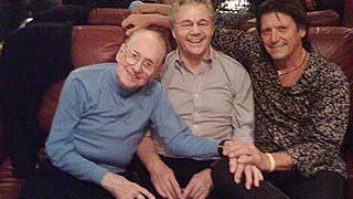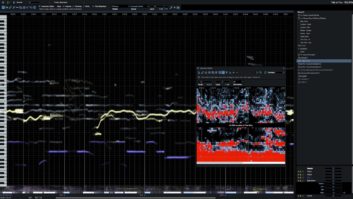
The New-Look Mix
I think the new Mix looks great! I have been reading Mix since the ’70s and thought it needed an update. I just wish the covers with mixing consoles would be more contemporary. I would also like to see more articles with classic engineers and producers, and more articles on where sound is going, and how to improve the current recordings to make them as good as the records of 35 years ago! What about the trend of the young people going back to vinyl because they are starting to get it that their MP3s sound like crap? Check out the stats for vinyl sales for the last year. It shows some promise.
Keep up the improving work.
Bruce Berman
From a longtime reader (1982?): I love the new Mix layout in the September issue! It seems “clean” and sophisticated, professional, also colorful at the right moments. The varied text looks sharp, too. And I like the section and column headings.
Thanks for making Mix magazine an even better read.
Paul J. de Benedictis
TECnology History Lessons
While I admit that selecting gear for the “2008 TECnology Hall of Fame” (September 2008) is a daunting task to say the least, I would like to impart a few things.
The Kurzweil 250 didn’t emerge until 1984, and Opcode, while it had some interesting innovations in 1990, was eclipsed by MOTU Performer, which was released in 1985 and is still one of the three main music software programs on the planet.
I hope these get nominated in 2009: Yamaha SPX90; TC Electronic 2290 Dynamic Digital Delay; Roland S770 sampler; Mackie HR-824 powered monitors — the most popular near-field since the NS10; Manley Vari-Mu; ARP 2600; BLUE Bottle; Apple Logic 8 with the Apogee Symphony system — still redefining the DAW; E-mu Proteus; and Empirical Labs’ EL8 Distressor.
Keith “Plex” Barnhart
The MusicPlex
The TECnology HOF is a continuing project, so eventually we’ll get some of the products you mentioned, such as Empirical Labs’ Distressor. Some, like Apogee Symphony and Mackie HR-824s, are not eligible until 10 years after they come out — our way of looking at products in a longer-term, historical context.
The Kurzweil 250 didn’t ship until 1984, yet it was a sensation when it was unveiled at AES in 1983. Most people had never heard sampled piano, strings and choirs of that quality and it set the standard for years. Opcode’s Studio Vision didn’t survive like MOTU’s DP, but its combining of MIDI and digital audio was historic.
We only induct 10 to 15 products a year, and 2008 had some very overdue entries, such as the Telegraphone, Neumann CMV3 Bottle Mic, Shure Unidyne, Yamaha NS-10s, Studer A800, etc. Manley’s Variable Mu is another great suggestion. However, if that was inducted before the UREI 1176 and David Blackmer’s dbx 160, I’d probably get strung up by an angry mob at AES.
Time heals all wounds, especially when it comes to history. We’d be happy to receive suggestions for future inductees from all Mix readers. Let us know your faves!
— George Petersen, executive editor
San Francisco Music Memories
In honor of the recent 125th AES Convention in San Francisco, Mix readers share their favorite music memories while in the Bay Area. For the editors’ product picks from the show, check out the show report on page 50.
Taking the train from Palo Alto [Calif.] to the city in the fall of 1967 to hear the Jefferson Airplane, Grateful Dead and Big Brother play at Winterland. The ticket was $3.00. My ears are still ringing from Janis’ shrieking emanating from the stacks of Marshall amps.
Jim Hewitt
I am a Bay Area violinist who has worked in every genre of music for more than 35 years, both live and in the studio. I’m still in there pitching, mostly playing weddings, and branching out into sound recording with my new little studio, which is why I’m coming to the AES show for the first time.
I have a lifetime of stories and “magic moments,” but one of my favorites is taking part in Boz Scaggs’ Paramount Theatre [Oakland, Calif.] shows in mid-1975, and the later New Year’s Eve run in the same venue. Imagine: a 30-year-old longtime rock music fan (though classically trained) working as assistant concertmaster of a huge rock ‘n’ roll orchestra in the classiest venue in the Bay Area.
Also, we were playing some arrangements from Boz’s Moments album that had been lost, but I “reconstituted” them for him. It’s about as close to pop music heaven as I’d been up to that time, and it has seldom been equaled (although some of the Bammie Award shows that I played every year for a decade, a 1986 national tour with Van Morrison, and Bjork’s show at the Paramount a few years ago, all came close).
John Tenney
Mix‘s December issue will focus on mastering. We’d like to hear from mastering engineers — tell us about your most interesting mastering project. E-mail us at [email protected].




